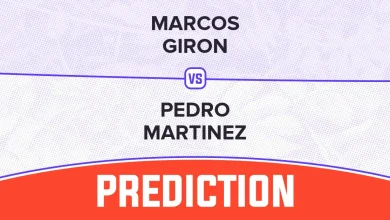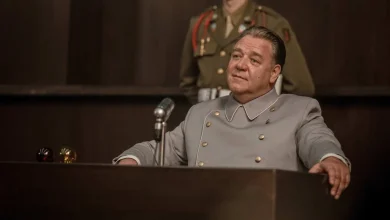Why isn’t Union Saint-Gilloise playing in its own stadium in the Champions League?

The Royale Union Saint-Gilloise is the opponent that Inter will face in Belgium in the second round of the League Phase of the Champions League. The club, which made pre-war football history in its homeland, is today returning to its former glory while keeping a unique recognisability that mixes the vintage flavour of a past football era, the tradition of Brussels and its multicultural progressivism. Its century-old stadium, the Joseph Marien, is a fundamental piece of the yellow-and-blue club’s brand identity, so frozen in time that it does not meet UEFA rules to host European competitions and forces the club to move to the Constant Vanden Stock, Anderlecht’s home stadium.
Origins and Italian connections
The club originated in Saint-Gilles, a municipality that is part of the urban area in the south of Brussels, where a group of youngsters from the working-class neighbourhoods, called kets, used to meet to play football. The foundation date seems like a joke of fate for Inter fans: it is 1 November 1897, the exact same day when Juventus was founded, the Nerazzurri’s eternal rival. However, the Bianconeri suffered one of their greatest disappointments precisely because of Union Saint-Gilloise’s first star. It was Louis Van Hege, a formidable Belgian forward who scored five goals wearing AC Milan’s shirt in the 8–1 defeat suffered in 1912 — still the largest defeat in Juve’s history. The following season, while The Pale Lightning continued to score prolifically for AC Milan, his original club became the first Belgian club to complete the domestic double of league and national cup during its first great epoch. The player returned to Union Saint-Gilloise in time to see, with a gala friendly against AC Milan, the inauguration of the club’s legendary stadium.
The Joseph Marien stadium
The Joseph Marien stadium came to life in 1919 in Forest, a municipality adjacent to Saint-Gilles, inside Duden Park, a true green lung in the south of Brussels. Initially called Stade de la Butte, or Stadium of the Hill due to its location within the park, it was soon renamed after the patron who contributed to the club’s professionalisation and the construction of the stadium. The sports facility, pioneering in Belgium for its electric lighting, hosted some matches of the 1920 Olympic Games, including Spain’s first official match. At the time dressing rooms were located in a separate building near the stadium, with players entering the pitch by descending evocative wooden staircases in the middle of the stand. The exterior façade of that stand is a true work of art, today classified as a Brussels heritage site. An Art Deco creation by architect Albert Callewaert, 101 metres long and featuring seven sculpted panels on its upper part depicting football and athletics, the two disciplines in which USG excelled at the time.
One hundred and six years later, everything has remained more or less the same, with the stadium immersed in greenery, the stands close to the pitch and a reduced capacity of 9,400 seats. The atmosphere today is unique — a romantic setting distinguished by the good-humoured passion of the public and great conviviality. Its terraces are a melting pot where you can hear the languages of the various immigrant communities that live in Brussels, a city with innate multiethnicity. Here people do not say “let’s go to the stadium” but rather exclaim “let’s go to the Union”, and at the end of the match they greet the players to the sound of Vamos a la playa, the hit by Righeira which for years has been the club’s unofficial anthem. Johnson Righeira has thus become a great yellow-and-blue fan, and it is not uncommon to see him moved on the terraces by what he considers an atmosphere from another time that takes him back to his childhood.
The rivalry with Molenbeek
The Marien stadium was also the stage for the great Union Saint-Gilloise of the 1930s, which from 1933 to 1935 put together a legendary run of 60 consecutive matches without defeat that earned the team the evocative nickname Union 60. It was a neighbouring side that ended the run — a team with which, in those years, a rivalry began and has been maintained over time, becoming historic. That antagonist is the Daring Club, today known as RWDM but commonly referred to as Molenbeek, after the famous western Brussels suburb where it comes from. The clash between the two teams is a triumph of the capital’s folklore, sometimes intersecting with mischievous destinies. Consider that Union’s first kit, before adopting the colours of the municipality of Saint-Gilles, was black-and-white because it was supplied by a Daring member who had donated used uniforms from the Molenbeek club.
President Joseph Marien died a few days before a match against Daring Club which, as a sign of respect, was not played. The rivalry between these two clubs is called the Zwanzederby and its fame went beyond football, so much so that it was represented in a theatrical play that became a popular cult. In 1938 the comedy Bossemans and Coppenolle debuted in theatres — a parodic version of Romeo and Juliet where the protagonists use the zwanze, a goliardic and self-mocking humour typical of Brussels, and in whose plot the antagonism between Union Saint-Gilloise and Daring Club is central. In the 1960s Union supporters even averted a merger with their eternal rivals thanks to a fundraiser organised as a cabaret evening, known as La nuit de l’Union.
Union Saint-Gilloise today
After decades spent as an aristocratic fallen giant of Belgian football, Union Saint-Gilloise has reclaimed its former status. The turning point came in 2018 when Tony Bloom, the British businessman and Brighton owner who made his fortune through poker and sports betting, bought the majority shares of the club which was then in the second division. Thanks to thorough scouting and a transfer campaign guided by the algorithm provided by Bloom’s software, USG returned to the top flight after 48 years, in 2021. Growth continued with the Belgian Cup victory after 110 years and culminated in last season’s Belgian championship triumph, 90 years after the previous one. The title celebrations reached their peak when the trophy was raised from the balcony of the town hall in a packed Place Van Meenen, the same place where 128 years earlier boys who loved football decided to create a club that became legend.





